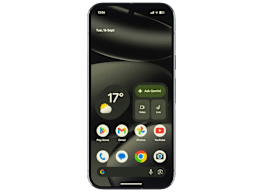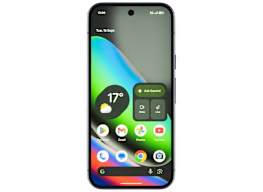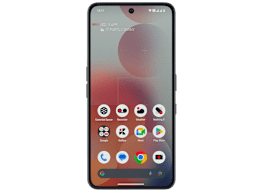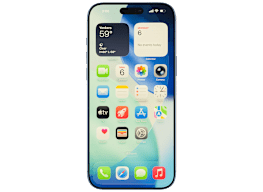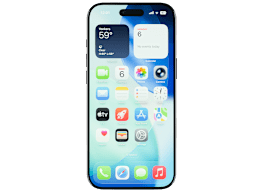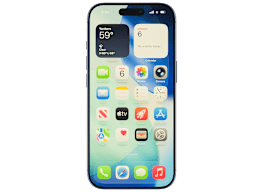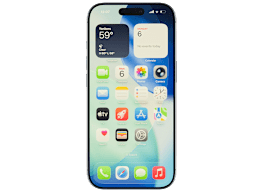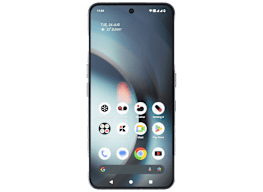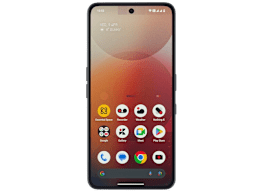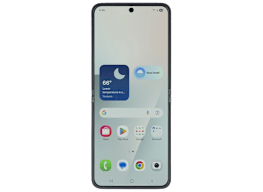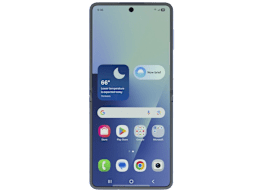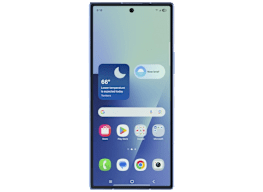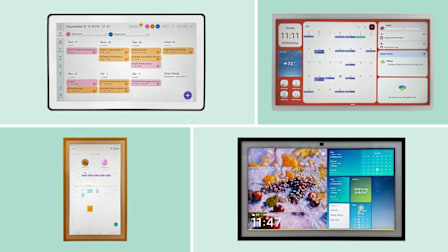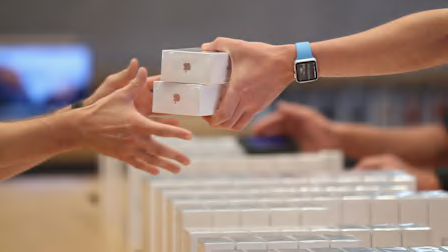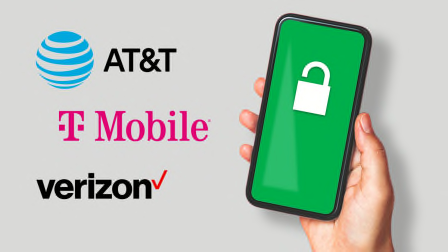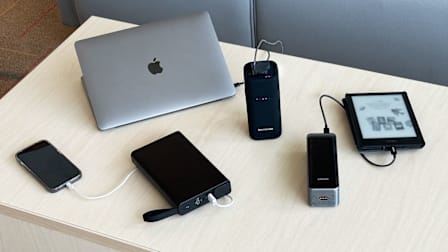Which iPhone Should You Buy?
From the new iPhone 17 and slim iPhone Air to the budget iPhone 16e, there are lots of smart options. Here's how to choose the best one for you.
When you shop through retailer links on our site, we may earn affiliate commissions. 100% of the fees we collect are used to support our nonprofit mission. Learn more.
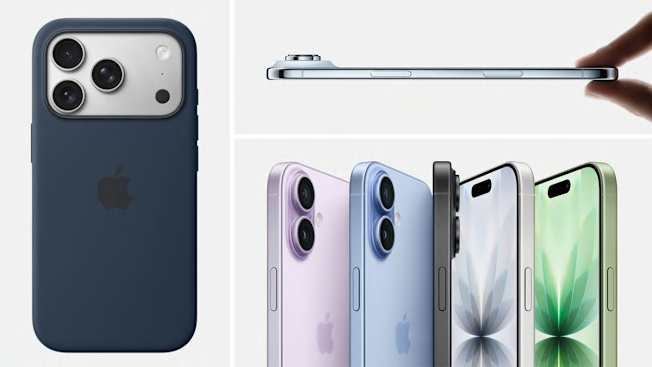
Fans of the iPhone now have a wealth of choices when looking for a new device, including the recently released iPhone 17 line. But what differentiates Apple’s highest-end option from its budget-friendly one isn’t always clear.
It gets even more complicated if you consider an older, refurbished iPhone, too. You’re left comparing a dozen or more options and a slew of similar-sounding specs. But we can help you with that.
6.1-Inch iPhone 16e, $599
If you want Apple’s most budget-friendly option, the iPhone 16e is for you. The model replaces the iPhone SE (2022), which is no longer sold by Apple, and adds some hardware upgrades.
It has a 6.1-inch display that our testers say is excellent quality, with smooth scrolling and crystal-clear images. Ditching the Home button on the SE, the new model now uses handy face recognition technology (Face ID) to unlock the device and allow you to sign in to apps and approve purchases.
The 16e comes with Apple’s A18 chip, which allows for the extra processing power needed for Apple’s AI features. (All iPhone models currently sold by Apple support Apple Intelligence.) Overall, the performance is excellent, according to our testers, meaning you can expect to tackle nearly any kind of task, including FaceTiming with a friend and navigating using GPS, without much lag.
The 16e has just one 48-megapixel rear camera. That means it’s less versatile than the multilens setups on the other iPhone models, which allow you to take ultrawide shots at 0.5x zoom or use optical zoom for crisper long-range shots. While our testers still rate the 16e’s camera system overall as very good, you may want to look at other models if a premium camera is important to you.
The 16e offers standard USB-C charging, which means no more Lightning cords, and is also compatible with wireless charging. The battery life is 37.5 hours per charge, which is on a par with the iPhone 16 and 16 Pro (37 and 36.5, respectively).
If you’re worried about Apple’s budget model being less durable, have no fear: The 16e also aced our scratch-resistance and water-intrusion tests and withstood 100 drops in our tumbler with no significant dents. Check out our hands-on review of the 16e, too.
6.3-Inch iPhone 17, $799, or 6.1-Inch iPhone 16, $699
If you want a reasonably sized iPhone with a great camera, the standard iPhone line is where to look. These models cost $300 less than their Pro counterparts, which offer the most premium features and a triple-rear camera setup, but they still perform very well in our tests where it matters.
The new iPhone 17 has a larger 6.3-inch OLED display that offers excellent color and clarity. It offers a dual-rear camera system with a 48-megapixel main rear camera and a 48-megapixel ultrawide that outperforms the previous-generation iPhone 16’s camera, according to our latest testing. It’s not quite as impressive as the Pro cameras, but it beats the single rear camera on the iPhone 16e or iPhone Air.
The iPhone 17 comes equipped with Apple’s A19 chip, which the company says helps facilitate an increasing number of generative Apple Intelligence features. And it comes with a few other modest upgrades, like a smoother 120-hertz refresh rate and 256 gigabytes of starting storage.
The iPhone 17 lasts 32.5 hours per charge and receives the highest possible durability score in our ratings, surviving dozens of drops in CR’s tumbler without breaking.
6.5-Inch iPhone Air, $999
If you hate the tug of a heavy device in your jacket pocket, the iPhone Air might be a great fit. This newly released model—which subs in for the Plus model in the latest iPhone line—has a large 6.5-inch ProMotion display and titanium frame, but it’s the thinnest-ever iPhone, measuring just 5.6 millimeters thick. Despite its petite size, you don’t have to fret about its fragility: It receives a stellar durability score, surviving 100 drops in CR’s tumbler and immersion in water. It also holds up well to our scratch-resistance testing.
The iPhone Air has the more powerful A19 Pro chip and a faster 120-hertz refresh rate for smoother scrolling. CR’s testing shows that the camera system isn’t quite as impressive as that on the Pro models—it has only a single 48-megapixel main rear camera—but you do get the improved 18-megapixel front-facing camera now available across the iPhone 17 line.
According to our testing, the iPhone Air offers a reasonable 29.5 hours of use on a single charge, but it’s still the worst performer in terms of battery life across the iPhone 17 line.
Overall, the iPhone Air is worth considering if you love the super-slim design—and you don’t mind taking a slight hit on battery life and camera performance.
6.3-Inch iPhone 17 Pro, $1,099, or 16 Pro
Willing to spend a little more for Apple’s latest hardware, but without the jumbo-sized display? The 6.3-inch iPhone 17 Pro has a more powerful A19 Pro chip that improves performance, even for the increasing number of generative AI features.
The 17 Pro’s triple-rear camera system is particularly impressive, earning one of the highest-ever camera scores in our labs. The model has a 48-megapixel main rear camera, a 48-megapixel ultrawide, and a new 48-megapixel telephoto, as well as a new selfie camera that can more dynamically shift to landscape mode without having to turn the phone.
The 17 Pro has the same 120-hertz high refresh rate (good for gameplay and smoother scrolling) as its siblings. It also features a few other iterative upgrades, like a more crack-resistant ceramic shield on the back of the phone. (The model indeed earns the highest possible rating for durability in our testing.)
The 17 Pro’s battery life is 34 hours on a single charge—a couple of hours longer than the iPhone 17 base model, but not as long as the larger iPhone 17 Pro Max, which lasts 43 hours on a single charge.
Overall, the 17 Pro looks to be the choice if you want the latest tech and best camera on a device you can more comfortably use with one hand.
6.9-Inch iPhone 17 Pro Max, $1,199, or 16 Pro Max
This is the biggest and best model that Apple has to offer. With the new iPhone 17 Pro Max, you get a large 6.9-inch display with a smooth 120-hertz refresh rate, the more powerful A19 Pro chip, and Apple’s most versatile Pro camera system. The 17 Pro Max now also offers a 2-terabyte storage option.
The 17 Pro Max has the same triple-rear camera available on the 17 Pro, which includes a 48-megapixel main rear camera, a 48-megapixel ultrawide camera, and a new 48-megapixel telephoto, as well as the improved selfie camera featured across the iPhone 17 line. It’s one of the most impressive camera systems we’ve tested on a smartphone to date.
If you’re willing to spend more for the largest display and most impressive camera, the Pro Max is the model for you.
iPhone Models by the Numbers
The table below spotlights the major differences among the phones. (If you’re reading this article on a smartphone, we recommend that you rotate the phone to landscape mode for a better view.)
| iPhone Model, Starting Price | Display Size | Main Camera | Storage Options |
| 16e, $599 | 6.1 inches | 48MP wide-angle camera | 128GB, 256GB, 512GB |
| 16, $699 | 6.1 inches | 48MP wide-angle, ultrawide-angle, and 2x camera | 128GB, 256GB, 512GB |
| 16 Plus, $799 | 6.7 inches | 48MP wide-angle, ultrawide-angle, and 2x camera | 128GB, 256GB, 512GB |
| 16 Pro (available from third-party retailers) | 6.3 inches | 48MP wide-angle, ultrawide-angle, and 5x camera | 128GB, 256GB, 512GB, 1TB |
| 16 Pro Max (available from third-party retailers) | 6.9 inches | 48MP wide-angle, ultrawide-angle, and 5x camera | 256GB, 512GB, 1TB |
| iPhone 17, $799 | 6.3 inches | 48MP wide-angle, ultrawide-angle, and 2x camera | 128GB, 256GB, 512GB |
| iPhone Air, $999 | 6.5 inches | 48MP wide-angle camera | 128GB, 256GB, 512GB |
| iPhone 17 Pro, $1,099 | 6.3 inches | 48MP wide-angle, ultrawide-angle, and 5x camera | 256GB, 512GB, 1TB |
| iPhone 17 Pro Max, $1,199 | 6.9 inches | 48MP wide-angle, ultrawide-angle, and 5x camera | 256GB, 512GB, 1TB, 2TB |
@consumerreports We buy *every* phone we test, including the latest iPhone16e! 🔥 We’ve put it through rigorous testing on battery life, durability, and performance. Tap the link in our bio for the full results. #techtok #iphone #iphone16
♬ original sound - Consumer Reports

















